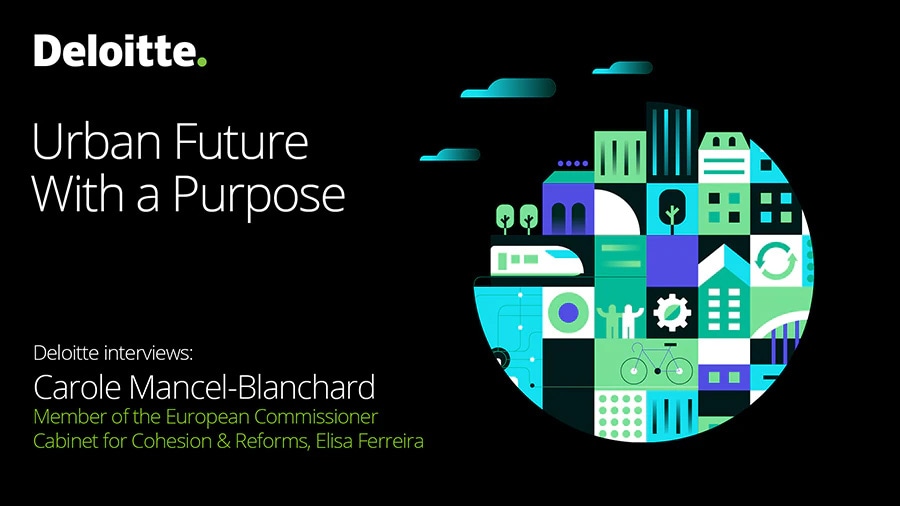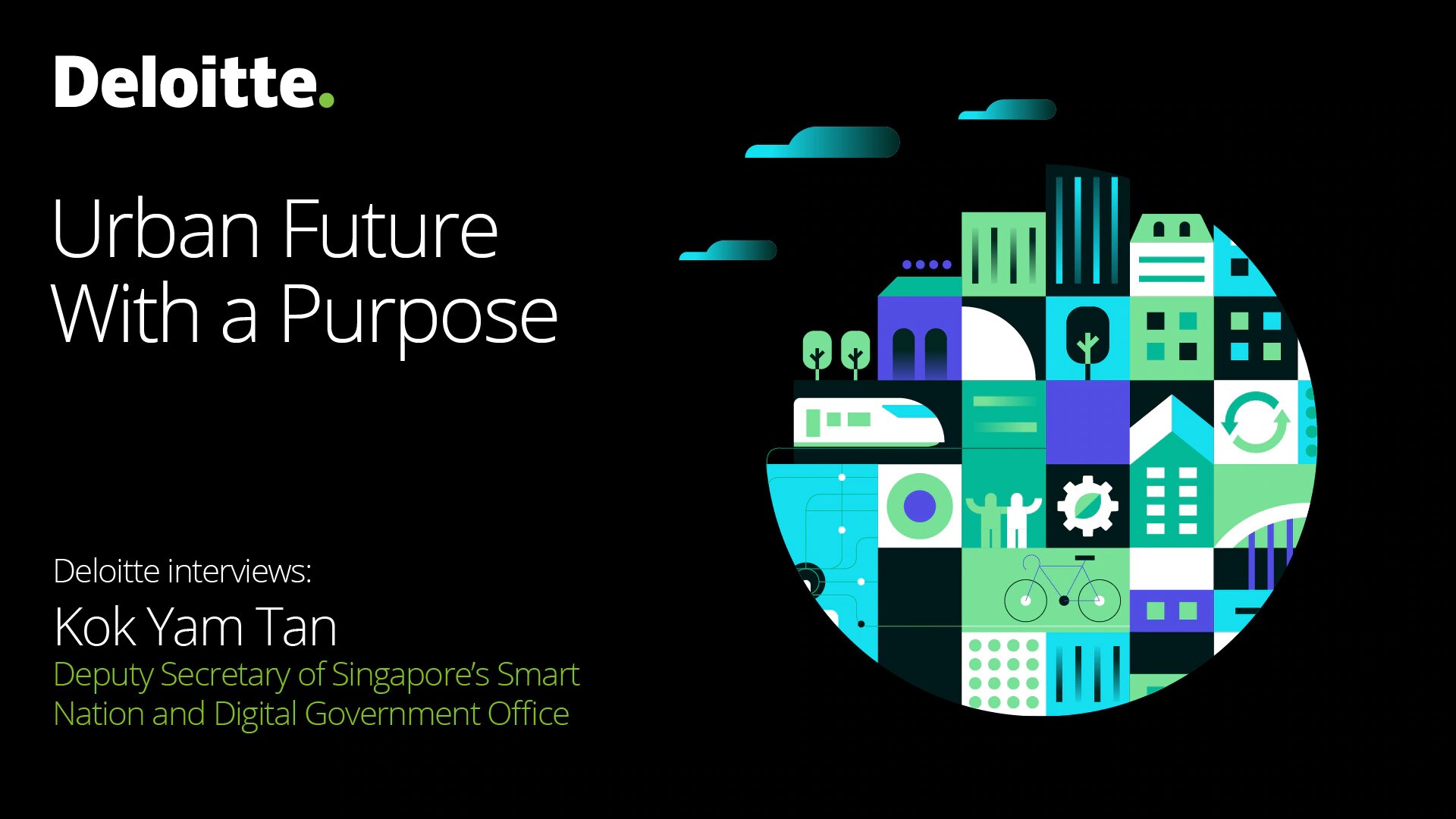Mobility: Intelligent, Sustainable & As-a-service
Cities are working towards offering digital, clean, intelligent, autonomous and intermodal mobility, with more walking and cycling spaces, where transport is commonly provided as a service.
This is one area where cities should expect huge disruption. Are you ready for robot taxis? For passenger drones flying in the sky? For tunnels under cities? To give up on your car, and embrace transportation-as-a-service? What implications will this have for your urban environment?
A transformation in the dynamics of global urban mobility is primarily user-centred. Some major changes to how people move around in cities are already under way, but the trend will accelerate further in the next decade, with electrification, autonomous driving, smart and connected infrastructure, modal diversity, and mobility that is integrated, resilient, shared, and sustainable – powered by disruptive business models. In response to an ESI Thoughtlab survey, 54 per cent of city leaders admitted that they will rethink mobility and transportation in the aftermath of the COVID-19 pandemic.1
Less need to travel
It is expected that in general people will travel less than in the past. With new urban planning concepts such as the ‘15-minute city’ promoting compact environments, ‘connected corridors’, and changes in the way that people work, movements within town will decrease substantially. As Jeff Merritt puts it, “That's the future, its lots of options and hopefully less travel every day.” Bicycles, scooters and even walking will increasingly be the preferred options in community neighbourhoods. From Bucharest to Brussels, and from Lisbon to Lyon, the coronavirus pandemic has triggered unprecedented investment in cycling around Europe. More than EUR 1 billion has been spent on cycling-related infrastructure and 2,300 kilometres (1,400 miles) of new bike lanes were rolled out between the beginning of the pandemic and October 2020.2
Electrification
It is estimated that in 2030, electric vehicles (EVs) will have around 32 per cent of the total market share for new car sales globally.3 But there will be differences between regions. For example Deloitte projections suggest that in 2035, vehicles not powered by internal combustion engines will make up more than 80 per cent of new vehicle sales in China but less than 50 per cent in the USA and between 35 and 55 per cent in Europe, depending on the scenario.
Connectivity and automation
Recent Deloitte research in the United States estimates that by 2040 up to 80 per cent of passenger miles travelled in urban areas could be in shared autonomous vehicles.4 This development will be led by major technology-based corporations or the automotive and transport sector and by technology-based start-ups. Solutions such as passenger drones by Ehang and drone delivery by Amazon are making rapid advances. Connectivity and automation will transform the mobility not only of people but also of goods, as logistics companies increasingly use autonomous technology to meet the rising demand for goods. A Deloitte article on autonomous trucks mentions that eight start-ups have raised a collective EUR 1.2 billion for self-driving trucking initiatives, in a move that could revolutionise logistics.5
Sharing
Cities will also benefit from an increase in on-demand multimodal mobility and Mobility-as-a-Service (MaaS) platforms, such as in Helsinki. For instance, residents will be able to plan and book door-to-door trips digitally, use the same travel card for all transport modes, and have access to automated last mile cargo shipment services and end-to-end real-time visibility of freight in transit, with seamless payment models.6 According to Deloitte projections, by 2025 shared driver-driven vehicles will account for more than 10 per cent of miles travelled in the United States.7 A study in 167 cities states that investments in real-time public transportation apps and MaaS apps generate high returns8 as smart transport systems can help to reduce unnecessary trips and create asset efficiencies. MaaS and Mobility-on-Demand will also affect corporate mobility. Why not to offer mobility packages to employees instead of a car as part of their benefits package?
Intelligent mobility
With data playing a central role in some of these shifts, customised travel is something that cities will start to deliver - with convergence between all aspects of infrastructure, policy and technology powering the new era of ‘intelligent’ mobility. The value of this mobility is forecast to grow to EUR 850 billion by 2025, representing more than one per cent of global GDP.9 Huge amounts of data open up opportunities for a flexible mobile ecosystem with the capacity to make available solutions that are adaptable and capable of meeting the needs of different segments of the population, such as children, elderly people, families with children, and tourists. Just like any company that wishes to operate in a particular market, cities will segment their customers (citizens) in a mobility context and implement strategies for each market segment.
These drivers apply to the transportation of both passengers and goods, and will change the urban landscape. Sustainable, smart and resilient mobility is also a pillar of the European Commission Urban Mobility Strategy released in December 2020.10 This document states that in order to achieve a 90 per cent reduction in greenhouse gas emissions from transport by 2050, it will be necessary to prioritise the optimal utilisation of data, a deployment of automated mobility on a large scale, and integrated mobility solutions such as connected electronics for multimodal transport.
“It took a pandemic for us to dive in and realise the capabilities of our technology—to prove that we can seamlessly convene individuals across the world and enable productive dialogues, to demonstrate that we can connect with medical professionals from our home without sacrificing quality or privacy. I'd like to see us embrace and further expand access to these technologies, which means travelling less.”
-Jeff Merritt, Head of IoT and Urban Transformation at the World Economic Forum
“Transport is responsible for a quarter of greenhouse gas emissions in Europe. It is really a sector where we need to ensure a transition to clean systems.”
-Carole Mancel-Blanchard, Member of Cabinet of the European Commissioner for Cohesion & Reforms
Video Interviews
Podcasts

Podcast with Carole Mancel-Blanchard - Member of the European Commissioner Cabinet for Cohesion & Reforms, Elisa Ferreira

Podcast with Kok Yam Tan - Deputy Secretary of Singapore’s Smart Nation and Digital Government Office
End Notes :
- ESI ThoughtLab: Smart City solutions in a riskier world. (2021)
- BBC News: Coronavirus: How the pandemic sparked European cycling revolution. (2020)
- Deloitte Insights: Electric vehicles; Setting a course for 2030. (2020)
- Deloitte University Press: Gearing for change. (2016)
- Deloitte Insights: Autonomous trucks lead the way. (2021)
- WBCSD: WBCSD releases foundational data-sharing principles for mobility. (2020)
- Deloitte University Press: The Future of Mobility: what’s next? (2016)
- ESI ThoughtLab: Smart City solutions in a riskier world. (2021)
- Deloitte: A data-powered Future of Mobility. (2020)
- European Commission: The Transport and Mobility Sector. (2020)
- World Economic Forum: A vision for post-pandemic mobility in African cities. (2020)
- The Guardian: 'Cleaner and greener': Covid-19 prompts worlds cities to free public space of cars. (2020)
- C40 Cities: Green and healthy streets. (2020)
- INRIX: INRIX 2020 Traffic Scorecard report.
- Deloitte University Press: Securing the future of mobility. (2017)
- Association for Safe International Road Travel.
- International Council on Clean Transportation: Update on electric vehicle adoption across U.S. cities. (2020)
- Metro: Metro Deploys First 60-foot Zero Emission Electric Bus for Revenue Service on the G Line (Orange) in the San Fernando Valley. (2020)
- Act News: Los Angeles takes steps to improve air quality and public health. (2020)
- Los Angeles Cleantech Incubator: Transportation electrification partnership. (2018)
- IQAir: Air quality in Los Angeles. (2021)
- Smart Cities World: Los Angeles launches urban air mobility programme. (2020)
- Robb Report: Los Angeles Will Be the Next Major City to Launch an Air Taxi Network. (2020)
- Evtol: Los Angeles pushes ahead on urban air mobility without Uber. (2020)
- International Council on Clean Transportation: Update on electric vehicle adoption across U.S. cities. (2020)
- Deloitte: Global Smart Cities Market Study. (2020)
- BBC News: The uncertain future for China's electric car makers. (2020)
- CBC News: How a shift to electric vehicles is driving change in 'China's Silicon Valley'. (2020)
- That's Magazine: Shenzhen Had the Cleanest Air in 15 Years in 2018. (2019)
- Phys.org: Giving up gas: China's Shenzhen switches to electric taxis. (2019)
- ETEnergyWorld: Costly electric vehicles confront a harsh coronavirus reality. (2020)
- Next Visions: Mobility in Copenhagen: Blueprint for Sustainable Cities. (2020)
- HERE: Urban Mobility Index. See Copenhagen in motion. (2020)
You may access the links to these sources, where available, on page 148 of the Urban Future with a Purpose study.






